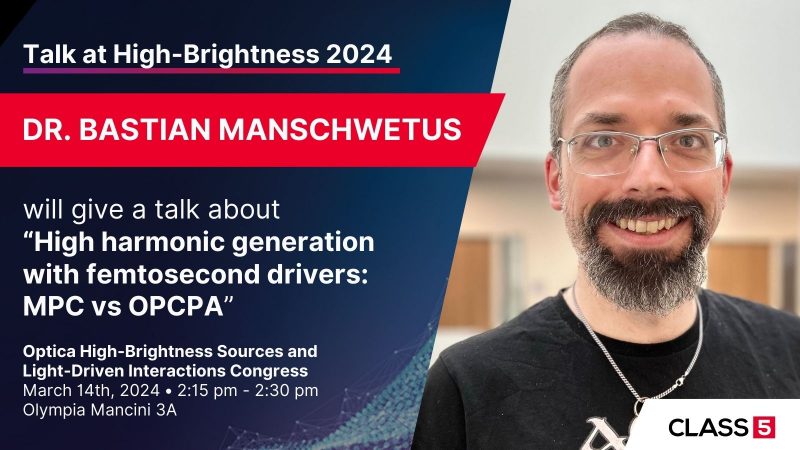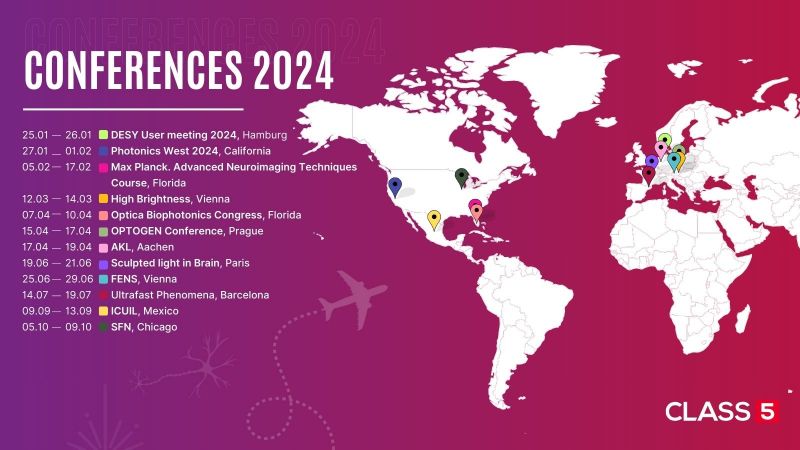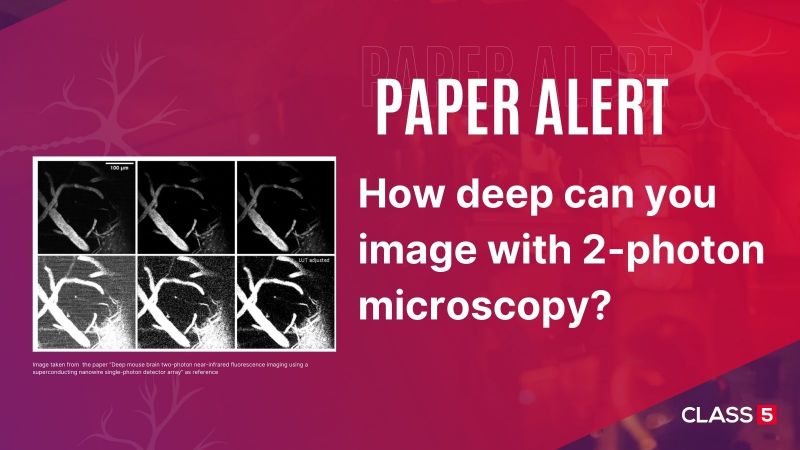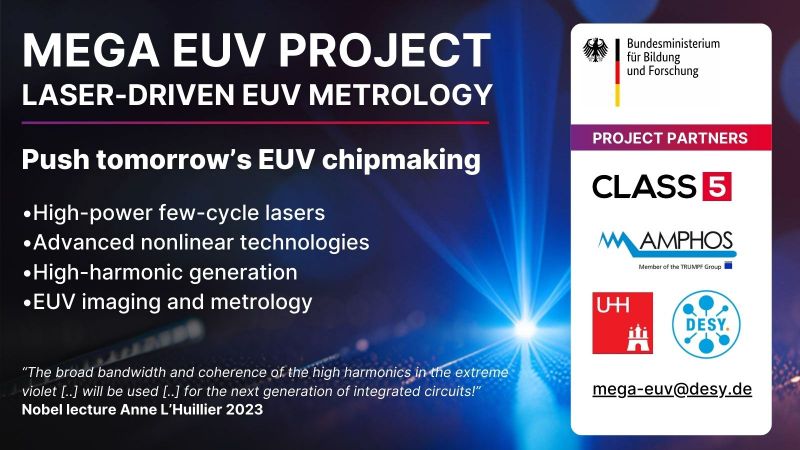Abstract: High harmonic generation with femtosecond drivers: MPC vs OPCPA – Dr. Bastian Manschwetus at High-Brightness 2024

Presented by Dr. Bastian Manschwetus in collaboration with Valentina Shumakova, Alice Autuori, Thomas Braatz, Christoph Heyl, Mark J.Prandolini, Heye Buss, Michael Schulz and Robert Riedel
Abstract
Recently multipass cell compression of industrial ytterbium-based pico- and femtosecond lasers has become popular as driver for the coherent upconversion of the near-infrared pulses to extreme ultraviolet (XUV) pulses by high harmonic generation (HHG) and the generation of attosecond pulses. These systems complement the widely used Ti:sapphire laser systems or high power optical parametric chirped-pulse amplifiers (OPCPAs).
In our contribution to the Optica High-Brightness Sources and Light-Driven Interactions Congress this year, we compare experimentally the high harmonic generation process for two different driver systems, using either a solid-state based multipass cell compression of an Yb:YAG laser system providing 17W at 100 kHz with a pulse duration of 29 fs (8 optical cycles), and a white-light seeded OPCPA system providing 17W at 100 kHz with a pulse duration of 20 fs (7 optical cycles). For both systems we measured the generated XUV spectral flux after target gas pressure, focal position and driver power were experimentally adjusted to optimize the flux and to achieve the highest photon energy. These first measurements indicate that the used OPCPA driver provides highest conversion efficiency at lower photon energies compared to the used MPC driver. But on the other hand, the MPC driver system is significantly less complex, more cost effective and a more compact system.
Presenting Author
Bastian Manschwetus, Head of Research and Development EUV/SXR sources, graduated in 2005 from Technical University Clausthal-Zellerfeld with a Dipl.-Phys. in Physics/Physical technologies. During the diploma thesis the subject was nonlinear optical spectroscopy of high-k semiconductor materials. He continued with PhD study at the Max-Born Institute Berlin, changing the topic to strong field physics investigating the behavior of atoms and molecules in strong laser fields. After receiving his PhD in Physics in 2010, he joined the group of Pascal Salières at the CEA Saclay in France with a Marie-Curie fellowship, now diving into the field of attosecond physics by high harmonic generation (HHG) and the application to atomic and molecular spectroscopy. From 2013, Bastian moved to the Lund Laser Center working with Anne L’Huillier and Per Johnsson on the development of a high peak power EUV source using the Lund Terawatt Laser.
From 2015, he became team leader for the pump probe laser operation at the Free-Electron Laser user facility FLASH in Hamburg and later leader of the pump probe laser work package in the framework of the facilities Flash2020+ upgrade project. In 2022 he joined Class 5 Photonics to take the chance for developing industrial-grade EUV/soft-X-ray sources based on their unique high-power laser and optical parametric amplifier technology.


